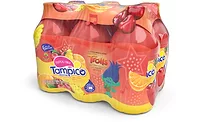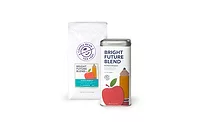Digital marketing, social media connects consumers to beverage brands
Augmented reality enables consumer connection

In today’s digital landscape, mobile apps, videos and social media go hand-in-hand with what industry experts call the “connected consumer.” According to a May 2018 Nielsen Insights titled “How to Reach, Engage and Measure Today’s Empowered Consumer,” today’s consumers spend over 23 hours a week using apps, viewing videos, streaming audio and social networking on their smart phones.
Brands are starting to embrace the concept of two-way conversation as a way to interact with their consumers. Increasing the array of channels, devices and platforms that splinter mass communication into the thousands of niche outlets, allows brands to cater to specific audiences, the report states.
Industry experts note the significance of the millennial age group in today’s connected consumer-driven atmosphere. According to Chicago-based Mintel’s June “Marketing to Millennials” report, millennials are the largest generational group in the U.S. and as they age, they are increasingly becoming a crucial part of the consumer economy. “Marketers interested in reaching this group will need to go beyond expectations and create products and services that have both purpose and value,” it states.
Conducted by the Pew Research Center, Washington, D.C., a Social Media Use in 2018 survey found that the social media landscape so far this year is defined by a mix of long-standing trends and newly emerging narratives.
The survey found that younger Americans, those between the ages of 18 and 24, particularly stand out for embracing a variety of social media platforms and using them frequently. Seventy-eight percent of the 18- to 24-year-old respondents use Snapchat and 71 percent of them visit the platform multiple times per day.
Similarly, 71 percent of consumers in this age group use Instagram and 55 percent reported they visit the platform several times per day. Forty-five percent of them also use Twitter, the report states.
In addition, 94 percent of 18- to 24-year-olds reported using YouTube and the number of U.S. adults using YouTube has grown to nearly 75 percent, according to the survey.
Roughly two-thirds (68 percent) of U.S. adults report that they are Facebook users and approximately three-quarters of those users access the platform on a daily basis, the report states.
Since most consumers are accessible through social media, what attracts brands to use and connect with them through these various platforms is its ability to be the “voice of the consumer,” says Eric Anderson, principal of the digital media center of excellence at Chicago-based Information Resources Inc. (IRI). “It is a powerful source of data to better understand consumer perspectives and needs. The implications for manufacturers, retailers and brands are significant,” he says.
“Understanding what consumers say and the sentiment, whether it is positive or negative, of what they said is one thing, but fully leveraging the voice of consumer data can also help drive brand growth,” Anderson explains.
Social storytelling
An emerging aspect of marketing to connected consumers and millennials alike is giving each of them a personalized storytelling experience. A June 2016 IRI report titled “Personalization Journey: Leveraging Big Data to Drive Big Growth,” stated that today’s consumers want to feel like they have an individual relationship with the brand and the products that they purchase.
Marketing campaigns should drill down to the needs of the individual consumer. This means that each consumer should receive unique information that will define his/her journey in real time, it states.
It’s important for brands to develop a comprehensive storytelling strategy to excite and invite their target audiences into purchasing its products, says Lauren Pérez-Maiy, account coordinator at Sparkloft Media, Portland, Ore. “Regardless of the platform, Instagram, Facebook, Twitter or even LinkedIn, having strong visual and written components are the key ingredients for success.
“Brands must tailor their story for each platform,” she continues. “Finding a balance between these components will maximize the grasp of messaging among current and potential customers.”
Social media concepts should encourage followers to participate in the brand’s journey, as it’s important to motivate them to engage with the content and product, Pérez-Maiy says.
For instance, Sparkloft Media developed a campaign centered on motion-based social content showcasing fellow Portland-based wine spritzer company, Blossom Brothers. Sparkloft developed three concepts to grow awareness for the beverage company’s new flavors: gifs, “free-frame” still imagery and miniature case narratives, it says. The concepts were created to integrate with Blossom Brothers’ point-of-sale (POS) creative, including posting and sharing abilities on social media platforms, designed to encourage consumers to purchase in-store, it adds.
Everyday influencers
Companies who wish to gage — and engage — with the connected consumer must create new ways for them to interact with their brands on a day-to-day basis. “Retailers can now create consistent experiences across display advertising, mobile apps and in-store visits, while business-to-business companies can engage with prospects at multiple levels of an organization via online events, email and content marketing,” states the May Nielsen Insights.
A myriad of beverage brands continuously are rolling out social media promotions that leverage new product launches or campaigns. “A rise in social media has made Instagram the digital marketing king,” says Ashlynn Persing, Sparkloft Media’s social media strategist. “Brands are utilizing this and going beyond POS marketing campaigns and creating content specifically for social media.
“Beverage-oriented influencers on Instagram are changing the way brands develop relationships with consumers,” she continues.
An example of beverage companies utilizing Instagram is Sparkling Ice, a brand of Talking Rain Beverage Co., Preston, Wash. This year, the company debuted a limited-edition mystery fruit flavor that coincided with a social media sweepstakes.
To participate, consumers were able to engage with the company on Instagram, Facebook or Twitter, using the hashtag #WhatTheFlavorSweeps and cast their vote on the mystery flavor. After the vote was submitted, participants were entered for a chance to win $45,000 worth of prizes, including an all-expense paid VIP trip to a major music festival to be held next April.
An article by Justin Twymon, for CBD Marketing, Chicago, a brand of Colman, Brohan & Davis, Inc., notes that augmented reality (AR) apps are becoming a top trend in digital marketing. “AR allows users to virtually enhance real-life experiences as they occur,” he says. “And it provides digital marketers the opportunity to showcase their products or services in ways that they never thought imaginable.”
Object recognition, when paired with AR, enables mobile devices to detect objects in a user’s real-life environment, giving digital marketers the power to superimpose hyper-relevant information, advertisements and more, he adds.
Rémy Cointreau, Paris, recently released an AR app, for their Rémy Martin Cognac. The company teamed up with graphic designer, Matt W. Moore to create a visual narrative for the brand using his iconic “Vectorfunk” abstract graphics, it said in a statement. The limited-edition app allows users to see the world around them through an art perspective that used 3-D elements, it added. Users then were encouraged to share their AR experience on social media using the hashtag #ARtbyRemyMartin.
Taking it a step further, The Macallan, Speyside, Scotland, launched an interactive 4-D group AR experience for consumers in New York City in celebration of National Scotch Day on July 27. Through a multi-sensorial virtual journey, guests could get an inside look into the Single Malt by choosing a path to explore the distillery’s contemporary architecture and collectable expressions, it said in a statement.
Consumers from other parts of the country were able to view The Macallan Distillery Experience on their mobile phones or desktops, through social media or at select wine and liquor retail stores, bars and restaurants using a virtual reality headset, it added.
The shift
Due to the shift towards digital marketing, beverage companies have expanded their reach while enabling consumers to go places not otherwise possible. “Social media allows brands to showcase the portability of packaging, like cans for example,” Sparkloft’s Persing says. “Now you are able to show off your brand while hiking, at the beach, a BBQ, etc.
“It also allows beverage brands to position their product as a lifestyle brand. A strong marketing tactic within the industry is showing the lifestyle that goes along with the brand — family-friendly, health-oriented or life-of-the-party,” she continues. “Social media has always been the perfect platform for creating a community of like-minded fans and sharing content relevant to their interests.”
She also points to the impact digital marketing has had on small, craft brands, as they are more discoverable and trendier. With consumer interests shifting to artisanal beverages, consumers want to feel like they discovered a brand before it becomes mainstream, she says.
Because social media gives companies such a significant reach, consumers are now able to find brands and products online that they were unable to find in local stores, Sparkloft’s Persing says. Specific and effective targeting strategies for digital ads is now more important than ever, she adds.
Experts agree that the millennial population and the connected consumer go hand-in-hand. Persing notes that millennials now have the purchasing power, and the best place to reach millennials is through social media.
If brands wish to have that two-way conversation, they will need to continue to innovate their strategies to reach their consumers and engage with them. The best social media practices for brands are created by those who have a strong understanding of their audience, Sparkloft’s Pérez-Maiy says.
“Developing fantastic content and brand promotions that are highly researched and targeted, will help increase awareness, engagement and lead to more orders,” she says. BI
Looking for a reprint of this article?
From high-res PDFs to custom plaques, order your copy today!





